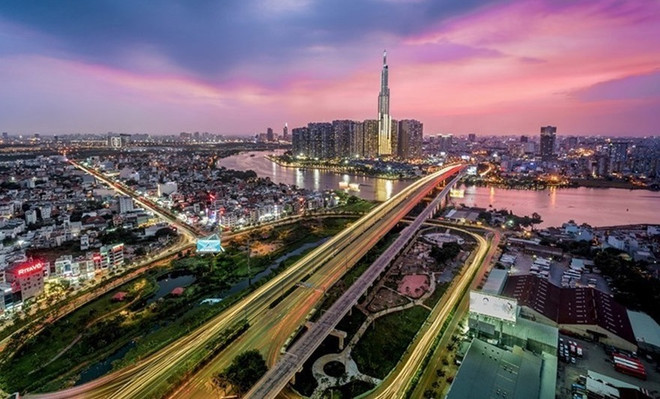
Ho Chi Minh city is the most dynamic economic city and financial hub of Vietnam. (Photo: laodong.vn)
The pandemic has indeed dampened thehigh growth seen in early 2021 and the GDP growth for the first nine months isless than the market forecast at 1.4 percent. Nevertheless, Maetha Peeravud,Assistant Vice President – Fund Management Group, BBL Asset Management,believed Vietnam’s economy has passed the lowest point.
“Looking three to six months ahead, the outlook for the Vietnamese economy ispositive,” he was quoted by the Bangkok Post as saying.
The COVID-19 vaccination rate is increasing with large cities like Ho Chi MinhCity and Hanoi already giving the first shot to over 90 percent of theirpopulation, Maetha said, adding that the country is expected to achieve herdimmunity in the first or second quarter of next year.
Geographically, Vietnam has astrategic location for its high-performing export sector. With the focus oneducation, free trade agreement, and labour skill enhancements, the globalsupply chain has paid great attention to Vietnam, including Samsung, the Koreanmultinational manufacturing conglomerate, which allocates over half of itsmobile phone manufacturing capacity to Vietnam.
Bloomberg forecasts Vietnam's GDPgrowth at 7 percent next year, one of the highest in the Southeast Asianregion.
Maetha agreed with Bloomberg’spositive outlook, identifying three major big long-term themes.
First, urbanisation in Vietnam willlead to a demographic dividend, namely the economic growth resulting from achange in the age structure of the population.
Over half of the Vietnamesepopulation is under 35. The number of workers in the industry and servicesectors is increasing while that in agriculture is decreasing, suggesting amajor shift toward higher income generation.
Secondly, Vietnam is benefiting fromindustrialisation growth from foreign direct investment (FDI).
Vietnam enjoyed strong support indeveloping more advanced technology and high-skilled labour training fromglobal technology companies, which would in turn help produce more premiumproducts, he said.
According to Maetha, digitalisationis the third factor contributing to Vietnam’s growth.
Along with its 5-year plan, the Vietnamese government also targets thedigital economy share of GDP to grow from 5 percent in 2019 to 20 percent in2025, he said.
In addition to economic growth, theVietnamese equity market is bullish with many catalysts.
Jeff Suteesopon, ASEAN Equity Portfolio Manager and Vice President – FundManagement Group, BBL Asset Management, said the market capitalisation of thethree stock exchanges in Vietnam is around 7 trillion baht, compared toThailand’s 18 trillion baht, suggesting an opportunity to grow.
Another catalyst is its valuation, Jeff said. Even with the strong rise in 2020and 2021, the valuations of Vietnam stock are not too high. The Forward P/Eratio in 2022 for the VN Index is only 13, compared to 16 on the Thai SETIndex. Moreover, earnings growth is going strong. Forecast EPS growth of the VNIndex in 2021, 2022, and 2023 is 25 percent, 18 percent, and 16 percentrespectively, he said.
Jeff said the most important was that the Vietnamese government was working onelevating its market from “frontier” to “emerging” which will attract moreinvestment to the country.
He emphasised that: “The politics in Vietnam is verystable, as is the Vietnamese dong, especially over the past three years, withgood export growth and consequently strong foreign reserves.”/.































